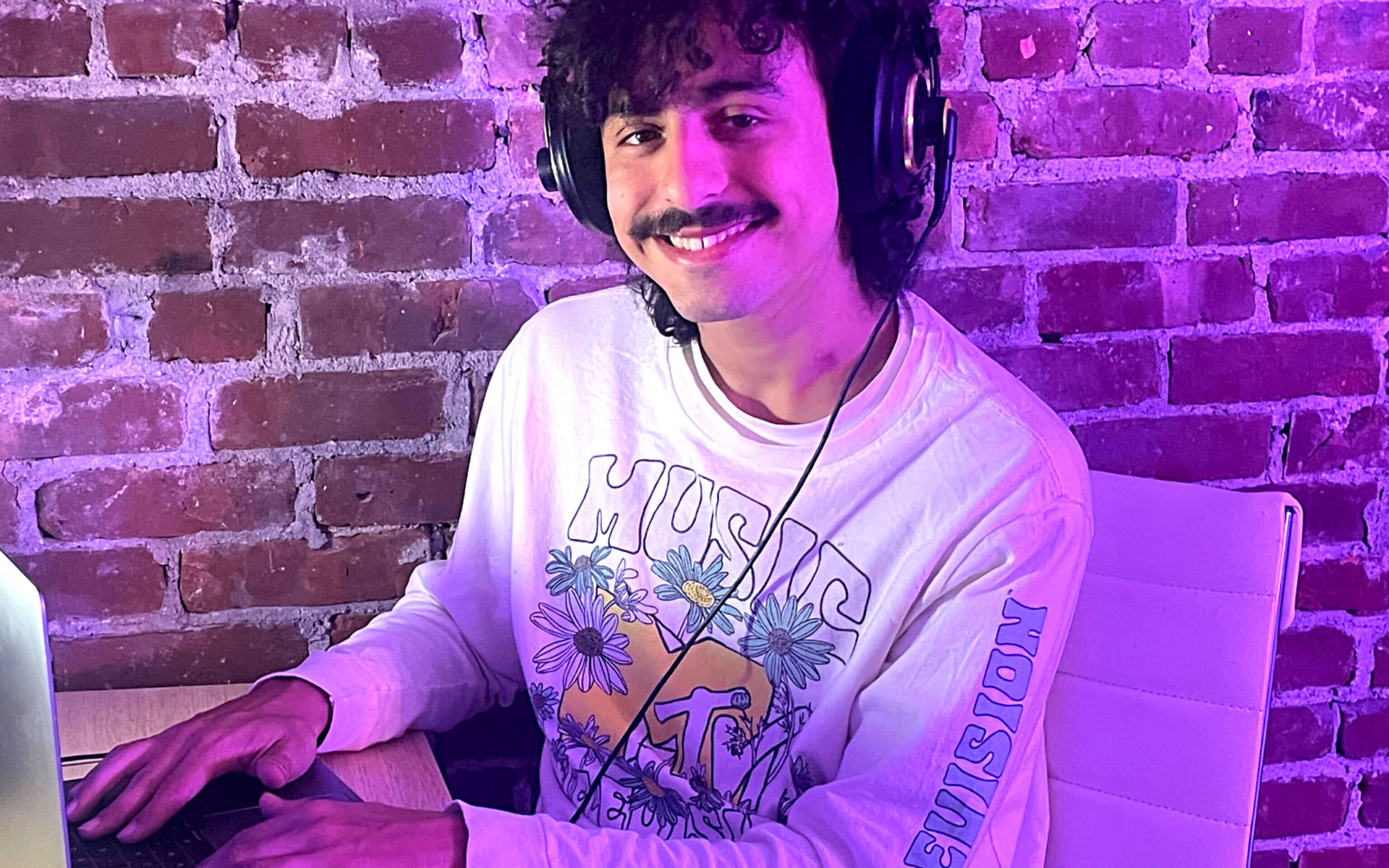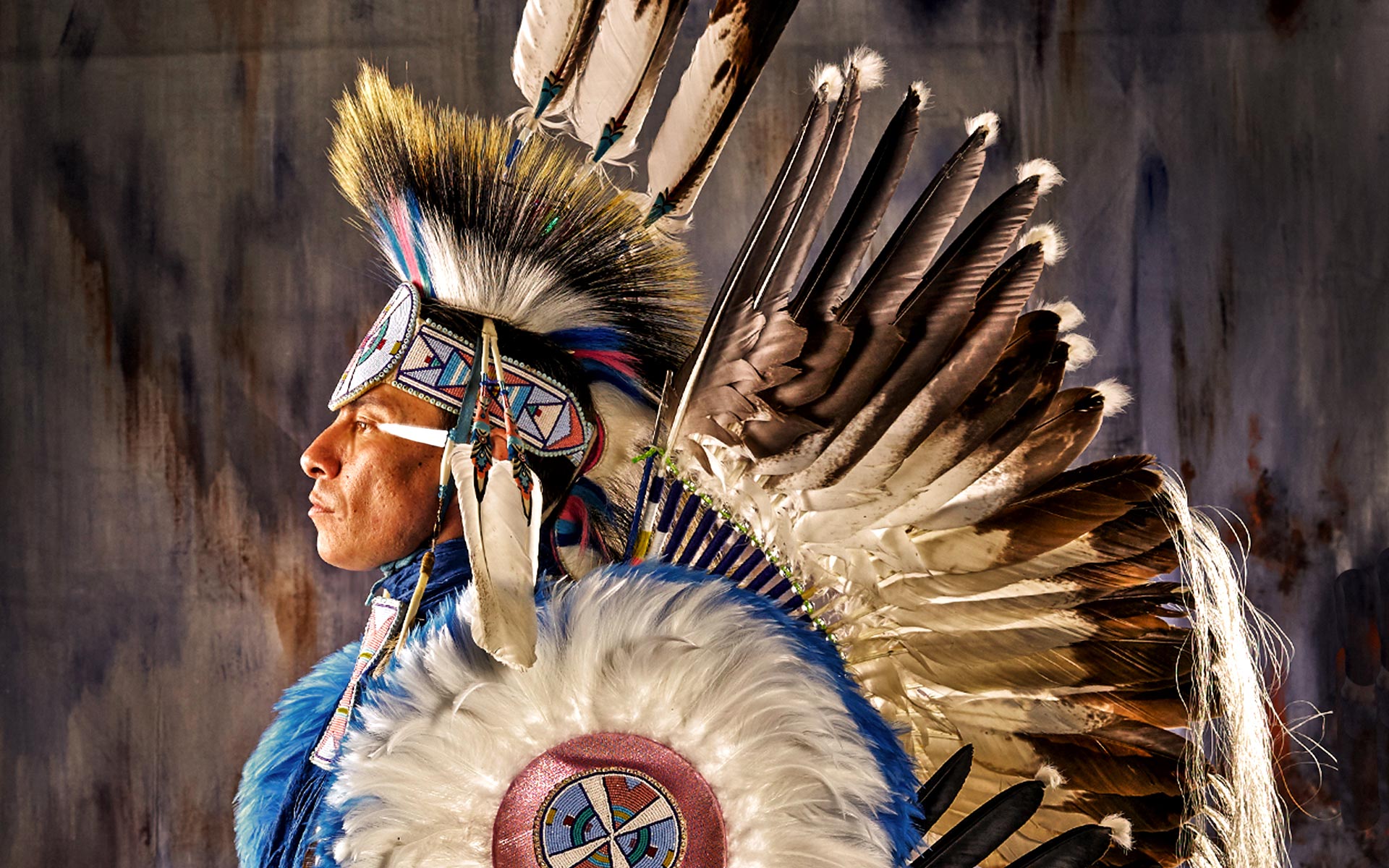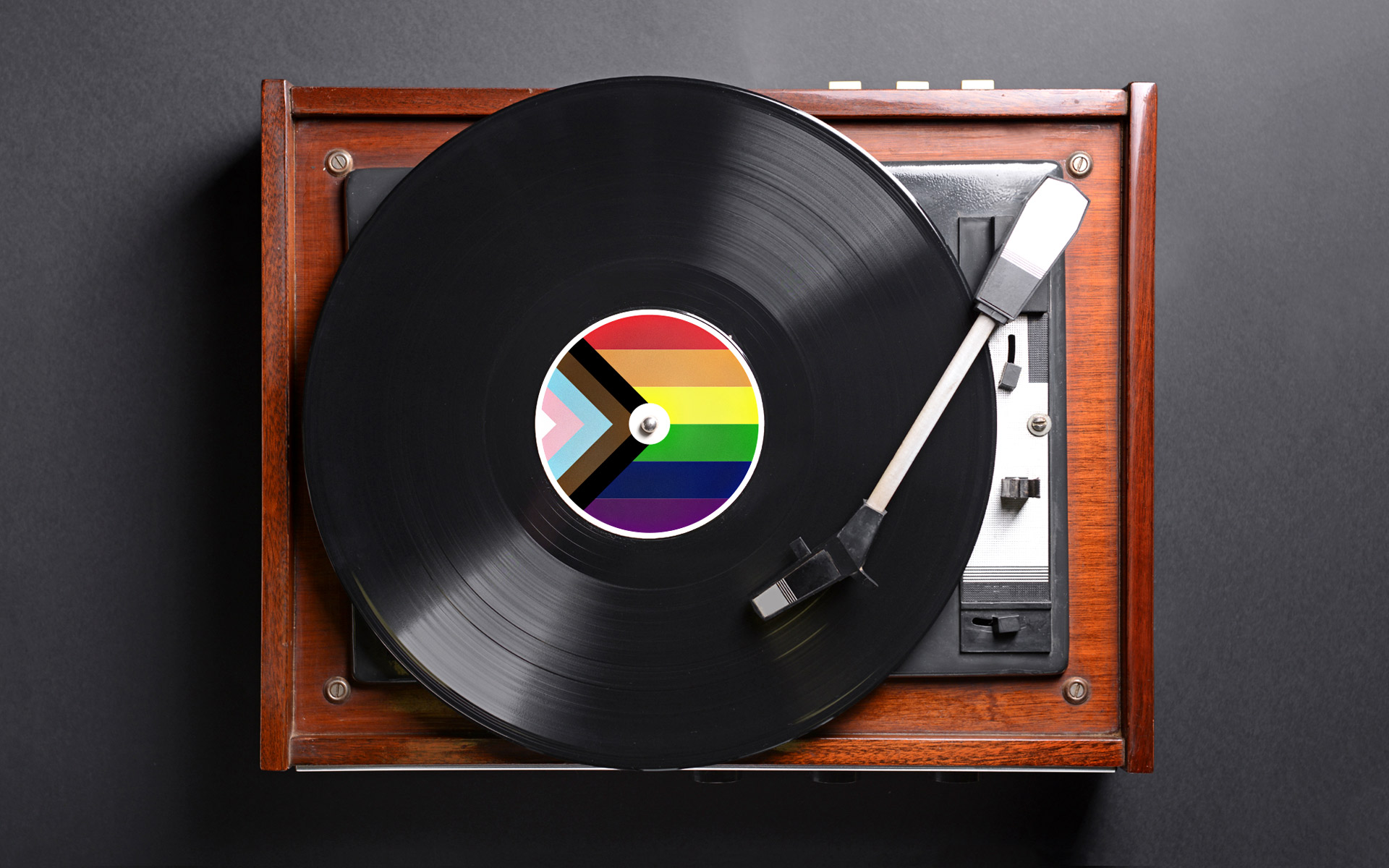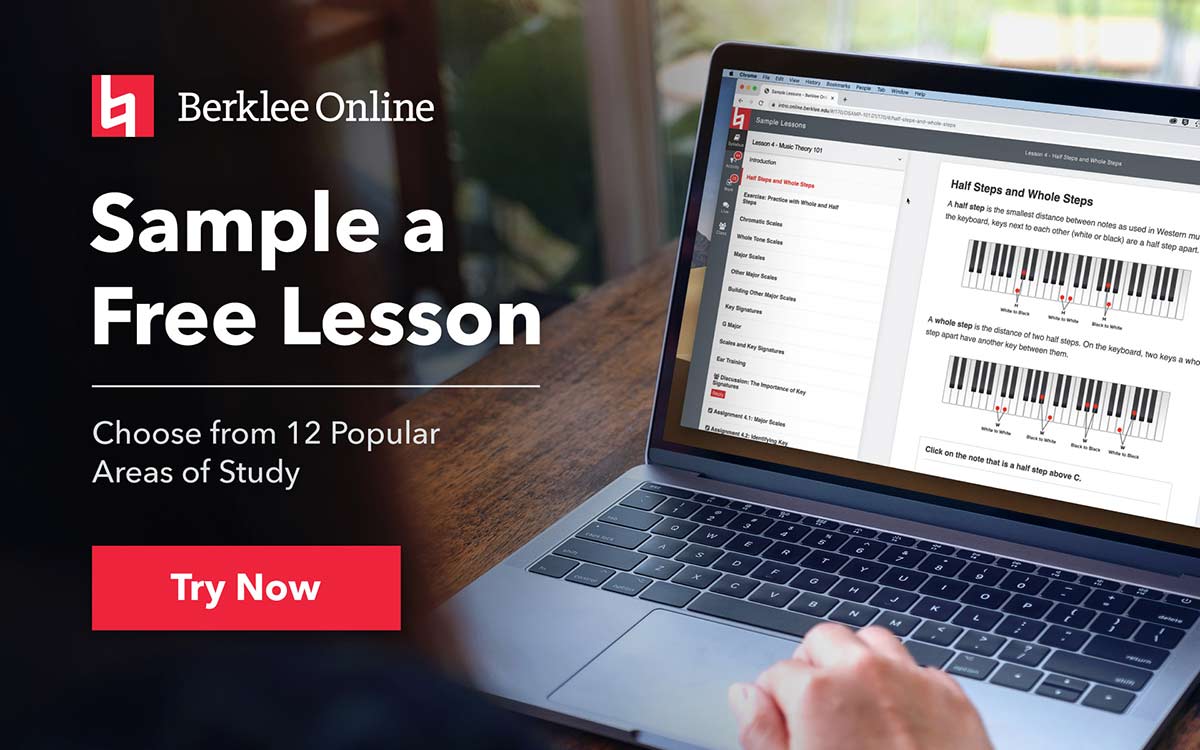My first memorable experience of connecting to music was when my second grade English teacher played the Beatles’ “Hello, Goodbye” on a CD player. My family would often play the Beatles at home on an iPod connected to speakers, but this was the first time I truly connected with a song and understood what I was listening to. I was compelled to ask my mom how I could listen to these songs whenever I wanted. This was my foundational experience with listening to music on a medium, that medium being the iPod shuffle.
There are many different media through which music can be consumed: it can be live, on the radio, on a CD, or heard through a streaming service. Music does not exist in a vacuum: the medium on which it is transmitted will influence a person’s perception of the music itself. “The medium is the message,” as philosopher Marshall McLuhan said. So sure, the medium can have its fair share of influence on the artist and their work, but what about on the listener? Is the medium capable of having any effect on our approach to music? Although this is based purely on my personal experiences, I’d like to share a few arguments as to why the medium through which we listen to music is more important than we might think.
Song-Focused Listening
Growing up in the 2000s, I experienced music mostly through MP3s. I’d store songs that I liked into my iTunes catalog, to then transfer them onto my iPod. This allowed me to experience music on the go, be it in the car with an aux cable or walking down the streets with my earbuds. But I never found myself listening to albums in their entirety—it may be because I had the option to buy the singles for 99¢ instead of paying for a full album (something that was not available during the vinyl and CD era), or simply because I was never introduced to the album as a concept. I would download songs that I had heard on the radio or in a movie. If I wanted to explore a band, I would simply look up their most popular songs and not take the trouble to dive in a bit deeper. This oversight is obviously on me, and I can’t blame the internet for my limited research, since it is basically a limitless resource of information. But maybe limits are good. If I’d had a more limited set of music I could listen to, for example, a set of 10 albums in my personal collection, I probably would have had a more personal connection to those projects. It might differ from person to person, but what I’d like to emphasize is the importance of the listeners’ participation with music and art in general.
In the digital age, music can be perceived and treated as if it were easily disposable because of how easy, and relatively inexpensive it is to listen to whatever you want whenever you want. When you take away the friction of going to a music store and exchanging your hard-earned cash for a physical album, it can make us complacent to just how special the listening experience really is. This is because there isn’t as much we’ve had to sacrifice for it. However, I’ve learned that there are ways to incorporate some intentionality back into the music listening experience, even when you are listening digitally. It just requires some patience.
Album-Focused Listening
My shift toward an album-focused listening experience began when I began my freshman year in high school. I had just started at a new school and I was eager to find friends who were passionate about music like I was. With one new friend in particular, we talked about the bands we both liked, but whenever I mentioned a track from a certain band, he would proceed by asking me what album it was from. I remember feeling confused by the question and wondering why he paid attention to an aspect that I would completely disregard. His approach to music was completely different from mine. Even when I asked him to recommend songs from an artist, he would only recommend the albums, leaving me even more frustrated and confused. So, I finally gave the album a try, but found the experience to be time-consuming and tiresome, having trouble focusing for an hour just listening to music.
Let’s be honest, most modern pop albums are not designed to be listened to all the way through, which makes the experience arduous. They are designed with a few hit singles in mind, which make their way onto playlists with other artists, or onto the radio. Of course there are exceptions, and more and more we’re seeing one album dominate the music charts: take for example Taylor Swift, whose 2022 album Midnights claimed 10/10 spots on the Billboard music charts, and Drake, whose 2021 album Certified Lover Boy claimed nine out of 10 spots.
It wasn’t until I listened to Pink Floyd’s The Wall that I realized the potential an album could have. Listening to the seamless transition between “The Happiest Days of Our Lives” with “Another Brick in the Wall Pt. 2,” or “Young Lust” with “Empty Spaces” was one of those ear-opening experiences I’ll never forget (I literally fell to the floor when I heard the aforementioned Pink Floyd transition). I remember asking myself if that sort of groundbreaking transition was allowed. It seems like a silly question, but I was so used to measuring music by the individual tracks that the possibility of one track intertwining with the other never crossed my mind.
The Vinyl Era
Had I grown up in the vinyl era, the process of listening to albums in order would have been the norm. Of course there were still plenty of people who cared more for the artist’s hits instead of their albums, but if you had an individual track you wanted to listen to, you’d have to buy the album in its entirety, buy the single, or at the very least, tape the song off the radio. The first two methods favored record companies, since they could profit off a hit song by forcing the consumers to buy more than just the song they wanted. It’s not surprising that concept albums were popularized during the vinyl era; it wouldn’t be commercially viable for a radio station to play songs that work best in their bigger context. When the Beach Boys recorded Pet Sounds (1966), studio executives were worried about the public reaction to their sonic shift. They were no longer the loveable surf-rock group with their two-minute radio-friendly singles: now they (well, mostly Brian Wilson) were committed to the exploration and experimentation of their sound within the album.
With the growth of the countercultural movement, we started to see more artists pursue albums as an attempt to tell a bigger story, with a focus on lyrical and musical motifs, and a unified sonic realm. The two-sided format of the disc can also implement meaning and influence to the music. In the Beatles’ Abbey Road (1969), the A-side of the vinyl includes hit after hit, concluding with “I Want You (She’s So Heavy),” a riveting track that ends with what seems to be an upcoming storm (my interpretation at least). But after you flip the record over to its B-side, you’ll feel the sky clearing with George Harrisson’s soft voice telling you “Here Comes The Sun.” The rest of the B-side is a medley of songs which match together so well that they are often referred to by the name of “The Long One.” This relationship between an A-side with hit songs and a more experimental B-side can also be heard in Kate Bush’s Hounds of Love (1982), which recently experienced a massive revival, thanks to the inclusion of the song “Running Up That Hill” in Stranger Things. One could only wonder if these creative choices would have been allowed by record labels if they were recorded during the digital age.
But there is another element to vinyl that may be seen as an obstacle to our current standard: the requirement of a dedicated listening space. This obstacle can be seen as a blessing in disguise. Those who still listen to vinyl records today would agree that there is more of a ritualistic feel to it compared to our approach with digital music. The act of removing the record from its jacket, blowing off the dust, letting the needle drop and sitting down to listen: All of these factors contribute to the importance of being present, and causes us to treat music in a less disposable way. There is nothing wrong with putting on music in the background, but you’ll never get the full experience unless you are present and focused.
Lyrics and Cover Art
Yet it’s hard to focus, especially in a generation that’s so used to instant gratification. It’s not big news to say that the internet and the mass consumption of all different types of media made for a bad influence on our attention span. One of my issues when trying to listen to albums was that at times my mind would easily drift off, especially if I’d be listening to it on my phone where at any moment a notification bell would ring and shift my attention towards it. My solution to the problem was to focus on reading the lyrics. This not only kept my mind quiet (as it was focused on the reading), but it also made me realize the importance of the lyrics themselves. I know this is something that’s different for each person, but when I listen to music, my mind usually focuses on the melody and instrumentation. As a kid I never gave the lyrics any credit; they were usually perceived as meaningless phonetics with only a few words standing out (like a Cocteau Twins song). I like to think that I killed two birds with one stone with this discovery. But it also highlights the importance of visual stimulation, something not present at all during my MP3 days. With CDs and vinyls you have an object to look at, which consists of cover art and liner notes. Many of these liner notes had the lyrics to the songs included in them, as well as information regarding the producer, session musicians, recording studio, and fun facts about the recording process. You can argue that you could easily look up these facts on the internet, but why would a kid necessarily think of doing that? Most songs on the mobile version of Spotify feature an interaction for lyrics, but these are sourced from a third party and have been criticized for their inaccuracy.
As I said before, maybe limitations were a good thing. When stuck with a material object like a CD, your resources are limited, but that in turn gives you the freedom to look over every single detail. Even if the facts are on the internet, you’re not face-to-face with them. Furthermore, the cover art brings another dimension to the experience of music. If you only listened to In the Court of the Crimson King through digital media, you might not know that the original artwork shows the terrified face of the “Schizoid Man” on the cover square expanding to show a wild ear on the other side of the record’s jacket. If you only know Bruce Springsteen’s Born to Run from a digital square, you likely don’t know that he’s leaning on E Street sax player Clarence “The Big Man” Clemons when you open the cover. On the other hand, we now see streaming services providing animated covers, something that’d be impossible in the older media.
The Streaming Era
Now it’s time to address the elephant in the room. Are streaming services good for listening? There are plenty of other articles that tackle the quality of sound, as well as the issue of underpaid artists and the growing disparity between these artists and the record companies that own their copyrights. But at the same time one could argue that streaming services saved the industry from the threat of peer-to-peer file sharing (a.k.a. music piracy). But this article is focusing on the listener’s experience, and as someone who transitioned from those file-sharing platforms to the more morally-digestible world of streaming services, I can see both ups and downs. Although streaming services seem to be a continuation of the push for singles, with its abundance of playlists that show off one or two songs from an artist, it also gives its users access to a pretty much unlimited collection of albums. One of the major drawbacks from vinyl and CDs are their prices. It seems like a risky endeavor to spend 15-20 bucks on an album you don’t even know if you’ll like (or maybe that risk is part of the experience after all). But at least for the case of the non-digital purchases, you get to actually own the record. There’s no such thing as a record collector in the steaming world. Maybe you’re proud of your long list of albums saved in your Spotify account (I sure am), but what if the company eventually fails? Where’s that music going?
The use of both vinyl and streaming services seems to be the rising norm among people who have an interest in analog music. I have a friend who likes to separate his digital collection from his physical one. Whenever he buys a new record, he proceeds to delete the album from his saved music in Spotify. His end-goal is to grow his vinyl collection and not have to depend on the digital outlets he uses. Yet he still appreciates music streaming because he can listen to albums that were on his checklist without having to commit to a purchase.
The Future of Listening
Nowadays with social media and apps like TikTok, we are seeing a new trend of songs being diminished to only 15 seconds (and therefore sped up and high-pitched). But we’re also seeing how TikTok offers a new means of music discovery for independent artists. If there’s anything we can surmise after reviewing the various listening methods of the past and present, it’s that music is going to keep becoming easier to listen to. And as it becomes easier, we can either consume in great quantities, mindlessly, or we can apply some of the same intentionality behind listening to physical music to digital music. That might mean setting aside some dedicated time to stream an album all the way through on your speakers, creating a list of your favorite albums (either on Spotify or in a Google Doc) and listening through one per day, or creating a hybrid digital and vinyl collection like my friend. It could also look like going through your saved TikTok videos to find the 15-second song you liked, finding it on Spotify, and listening to more songs by that particular artist. It might also mean going to see live music more often. As the times and technologies change, we can still reap all the benefits and ease of digital music, while still taking the time to deeply connect with music we love.
Ottavio Kaye is a member of the Class of 2024 at Berklee College of Music, majoring in Contemporary Writing & Production. He plays guitar, keyboard and likes to compose in his free time. Raised in Rio de Janeiro, he learned to enjoy both the serenity of nature as well as the chaos of the city, and he tries to incorporate that dichotomy into his music. He also expresses his passion for music and the arts through the articles that he has written for “Take Note.”








